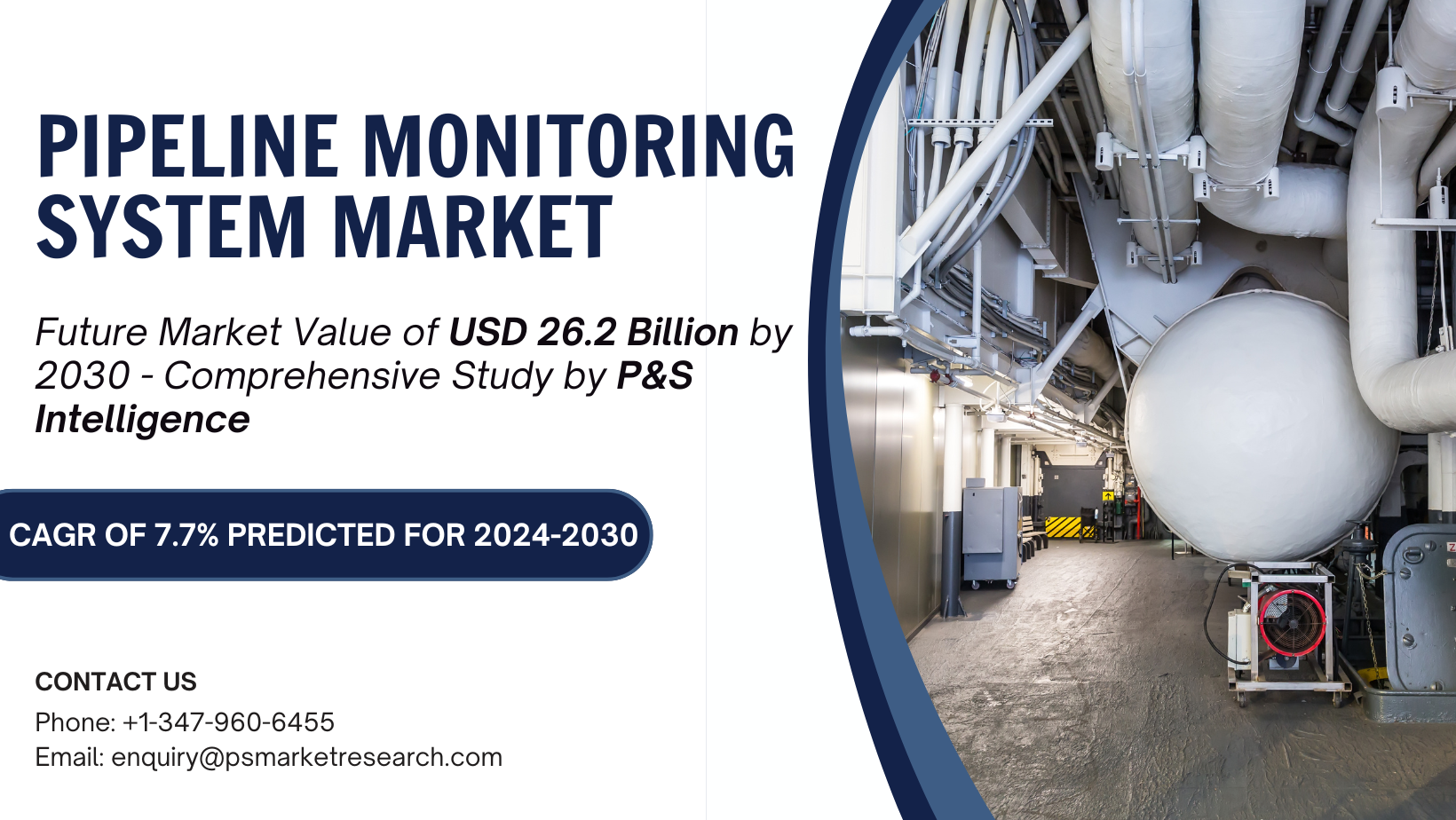Market Overview
The pipeline monitoring system market generated revenue of USD 15.8 billion in 2023, which is expected to witness a CAGR of 7.7% during 2024–2030, reaching USD 26.2 billion by 2030.
This is an expansion of the length of the oil & gas pipelines across the globe, technology integration, the usage of monitoring systems, and the need for more metallic pipelines. However, due to corrosion, structural problems, and other environmental challenges, the aging pipeline network is experiencing leakage and this explains why such systems are required.
The market for oil and gas is experiencing significant growth in global markets; therefore, the systems of pipelines are advancing. New pipelines are being constructed and the currently existing pipelines require constant upgrading, for which comprehensive monitoring technologies are needed. Optimal facilities are invested by entrepreneurs to increase the yield of hydrocarbon materials and minimize costs.
Moreover, the risks linked to terrorist and cyberattacks on the oil & gas industry are also rising and these aspects have forced E&P companies internationally to increase investment in infrastructure and networks. The previous years have witnessed various attacks on gas facilities and plants primarily in Europe and the Middle East regions.
Key Insights
· During the projection period, the metallic pipeline category is projected to advance at a CAGR of 10%.
· High need for hydrocarbon transport because of corrosion resistance, durability, weldability, higher yield, and tensile strength.
· Extensively utilized in oil & gas fields, refineries, petrochemical plants, and power plants.
· Types include stainless steel, aluminium, ductile iron, carbon steel, duplex stainless steel, alloy steel, corrugated, copper, and cast-iron pipes.
· Suitable for underground and underwater transportation, capable of handling high pressures and temperatures.
· Enables smooth functioning when integrated with monitoring systems.
· The ultrasonic category growing at a CAGR of 7%.
· Ultrasound detects flaws and leaks in pipes using high-frequency sound waves and noise patterns.
· Sound emission monitors respond to modifications in background noise, distinguishing leak disturbances from regular tap water.
· Ultrasonic monitoring systems identify leaks, irregularities, and structural problems by examining variations in sound patterns or frequencies.
· Advancements in signal processing techniques and sensor technologies enhance the reliability and accuracy of ultrasonic systems.
· Ultrasonic monitoring systems usage gaining preference for pipeline integrity assessment.
· Based on the application, the crude and refined petroleum segment is anticipated to dominate the pipeline monitoring system market with a significant share of over 70%.
· Crude oil is among the major sources of energy utilized in the production of electricity, in the transport sector, and for heating purposes.
· These products are transported through pipelines thereby causing more demand for total security and checking services.
· There is a demand in most industries for the possibility of using reliable and safe pipeline monitoring systems for the delivery of hydrocarbons over long ranges at a minimal cost.
· They can track the increase in pressure, leaks inside the pipelines, thefts, impacts on the environment, and losses.
· The global market for microreactors is anticipated to be dominated by the North American region during the forecast period and is expected to account for a 40% share in the year 2030.
· With the progressive pipeline construction in the United States and Canada, all pipelines should be equipped with leak detection technology of the latest generation.
· In the current market structures, it is evident that the U.S. occupies a bigger market share than Mexico; however, Canada is expected to mushroom within the STM industry soon.
· Europe is the second global market due to the increased spending in oil & gas investment The market leaders of Europe are Germany, but the UK has the highest CAGR.
Source: P&S Intelligence





